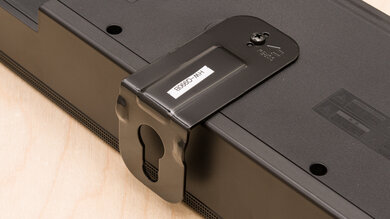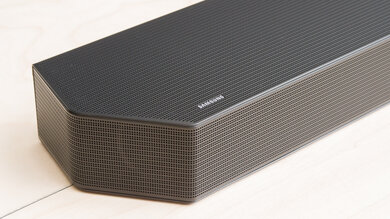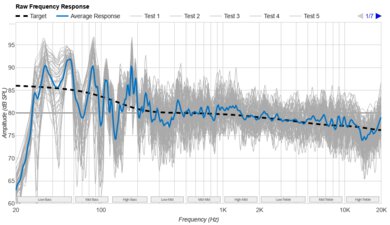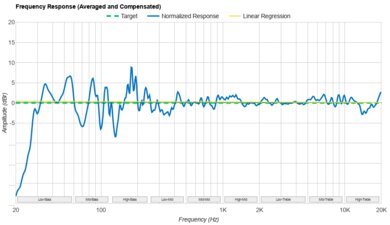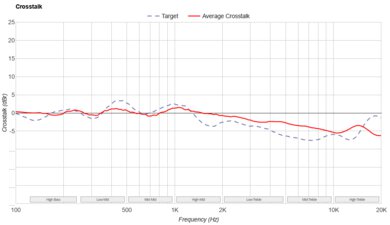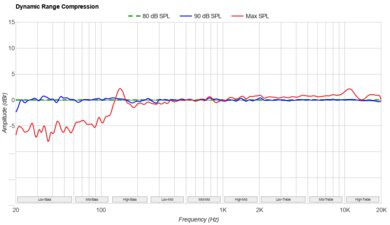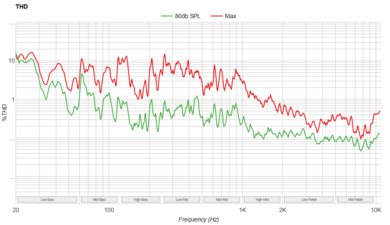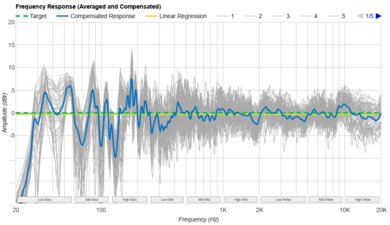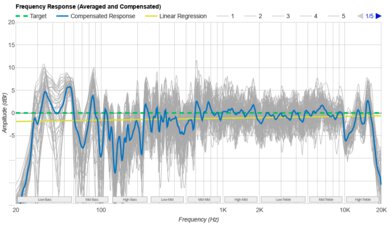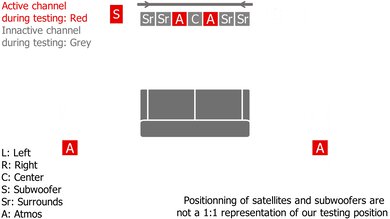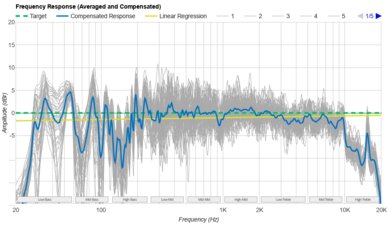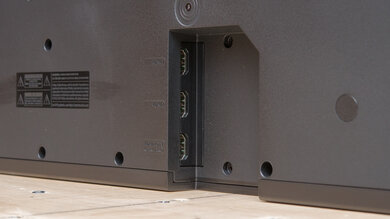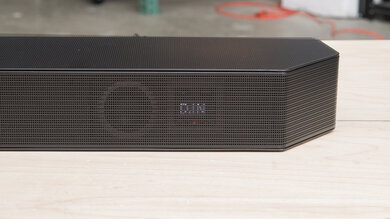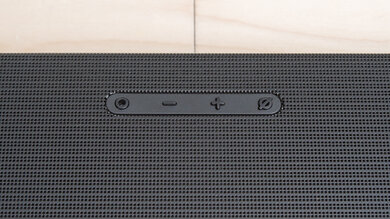The Sony HTX8500 is a 2.1 setup from 2019. This standalone soundbar has a subwoofer integrated into the bar to help save space, and it uses Sony's S-Force Pro Front Surround technology to help create a more immersive sound. Unlike many other 2.1 setups, it supports Atmos and DTS:X content, and its Vertical Surround Engine technology helps reproduce a fuller and more cinematic sound. Its sound profile is a bit boxy and dark, but vocals are still reproduced clearly, making it a solid choice for soap operas and audiobooks.
Our Verdict
The Sony HTX8500 soundbar is alright for mixed usage. This 2.1 setup has a boxy and slightly dull sound profile, though it can still reproduce vocals and lead instruments pretty accurately. Despite its dual subwoofers integrated into the bar, you don't feel the rumble in the low-bass with bass-heavy music or action-heavy movies. Unlike many other 2.1 setups, it supports Atmos content, but its performance isn't the most immersive since it has to downmix it into surround sound.
- Can play Atmos and DTS content.
- EQ presets plus bass adjustment feature available.
- No room correction feature.
- Lacks low-bass.
The Sony HTX8500 is decent for dialogue-centric content like TV shows. Its sound profile is a little boxy and dull, but voices are still reproduced pretty clearly. There's even a 'TV' preset that doubles as a dialogue enhancement mode. However, due to its 2.1 design, it has to use its left and right channels to simulate a phantom center, which doesn't sound as clear and real as a discrete setup. Voices don't seem anchored to a pinpoint location in the soundstage.
- Dialogue enhancement and night mode feature available.
- Bluetooth compatible.
- No room correction feature.
- No discrete center channel.
The Sony HTX8500 is okay for music. Though dual subwoofers are integrated into the bar, it still struggles to reproduce the low thump and rumble in the bass range, so it's not ideal for bass-heavy genres like EDM. Its sound profile is boxy and dark, but vocals and lead instruments are still reproduced pretty clearly. There's a bass adjustment feature to help you customize its sound, but unfortunately, there's no treble adjustment or graphic EQ available.
- EQ presets plus bass adjustment feature available.
- Bluetooth compatible.
- Always-on surround sound feature.
- Lacks low-bass.
The Sony HTX8500 is adequate for movies. Its boxy, slightly dull sound profile can still reproduce dialogue quite clearly. However, despite its dual subwoofers, it lacks the low thump and rumble in the bass you feel during action-heavy scenes. It supports Dolby Atmos content but has to downmix it into surround to play it. Similarly, its surround performance isn't the most impressive.
- Can play Atmos and DTS content.
- EQ presets plus bass adjustment feature available.
- Always-on surround sound feature.
- Lacks low-bass.
Changelog
- Updated Nov 21, 2023: Updated the text for greater clarity and consistency. No changes in test results.
- Updated May 05, 2023: Updated Video Passthrough To TV results with new methodology.
- Updated May 05, 2023: Converted to Test Bench 1.2. Updated the results for audio format support via ARC/eARC, HDMI In, and Optical. Added Video Passthrough to TV results as well.
- Updated Mar 20, 2023: Added cable lengths to In The Box.
Check Price
Differences Between Sizes And Variants
This bar is available in 'Black'. Let us know in the forums if you come across another version, and we'll update our review.
Popular Soundbar Comparisons
The Sony HTX8500 soundbar is a 2.1 setup. Like the Sony HT-S200F, it has a subwoofer integrated into it, but it's similarly unable to reproduce a thumpy low bass. However, this bar stands out because it supports Atmos and DTS content, which is fairly uncommon in 2.1 channel setups. It's an otherwise pretty ordinary-performing soundbar and doesn't stand out amongst its competitors, especially when compared to other 2.1 setups like the Yamaha YAS-408 or the Samsung HW-T550.
Check out our recommendations for the best Dolby Atmos soundbars, the best soundbars with subwoofer, and the best soundbars under $200.
The Sony HT-X8500 is more versatile than the Sony HT-S100F. The HT-X8500 is a 2.1 standalone bar with Dolby Atmos support. It has a better surround performance, too, and it comes with some extra sound enhancement tools such as a bass adjustment feature. That said, the HT-S100F is still a decent choice for dialogue-heavy content like TV shows and podcasts.
The Sonos Beam is a better soundbar than the Sony HT-X8500. The Sonos is a 3.0 setup that's better built, has a discrete center channel that performs better than the Sony soundbar's phantom center, and has a better stereo soundstage. You can also stream music to it using Wi-Fi or Apple AirPlay. However, even though the Sony soundbar's height channel performance is sub-par, it supports Atmos, which is rare for a 2.1 setup. The Sony also has EQ presets, an HDMI Out, and a Full HDMI In port, which is nice.
The JBL Bar 5.1 Surround is better than the Sony HT-X8500. The JBL is a 5.1 setup with a dedicated subwoofer that can reproduce a more extended low-bass. It's better built, and it has better soundstage, center, and surround performances. That said, it doesn't support Dolby Atmos content like the Sony.
The Sony BRAVIA Theater Bar 8 is better than the Sony HT-X8500. Its soundstage is wider with a bit more thump. Dialogue is considerably clearer, thanks to the dedicated center channels on the BRAVIA Theater Bar 8, and overall, it sounds less boxy than the HT-X8500. While both support most of the same audio formats, if you're a gamer, the BRAVIA Theater Bar 8 boasts 4k @ 120Hz support, while the HT-X8500 tops out at 60Hz passthrough.
Test Results




